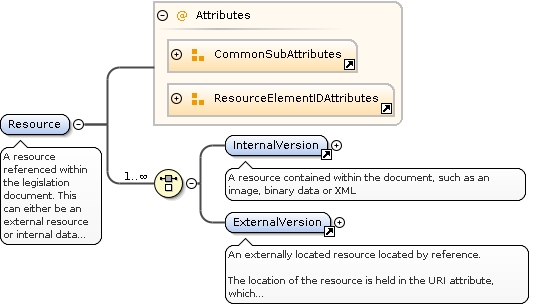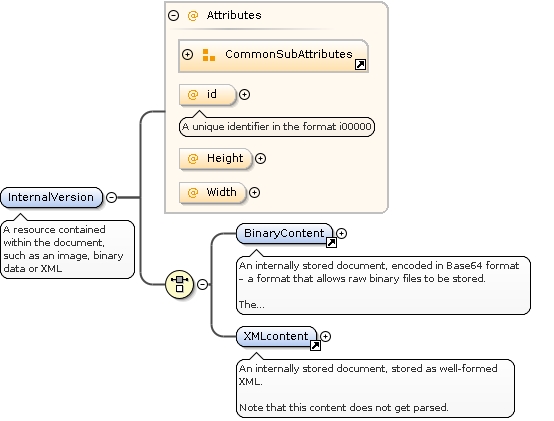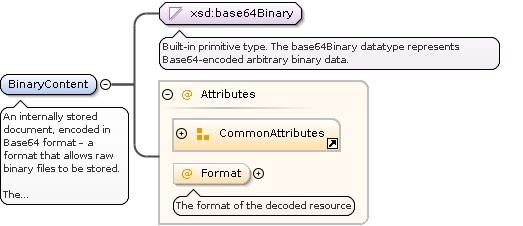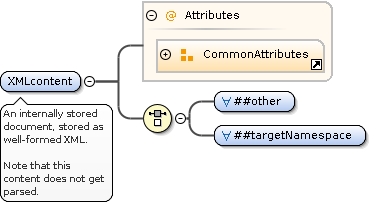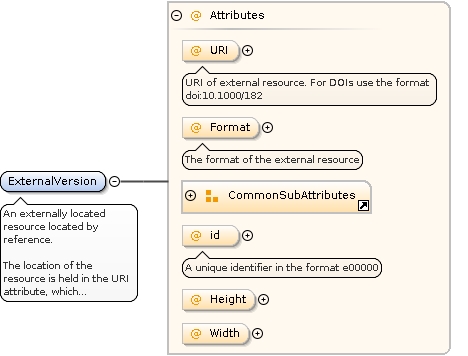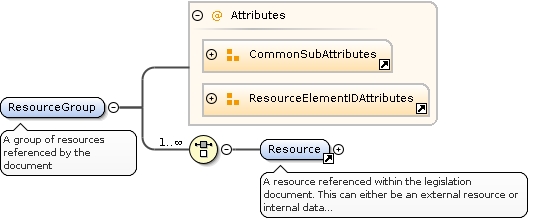| Namespace | http://www.legislation.gov.uk/namespaces/legislation | ||||||||||||||||||||||||
|
Annotations
|
Holds all of the content that is needed by the document but is not part of the main flow of the document or is external to the document, e.g. graphics. Resources may be held internally or externally. If the resource is held internally then it may be held as XML content, e.g. SVG for
a graphic. Internal versions are held using the
The |
||||||||||||||||||||||||
|
Diagram
|
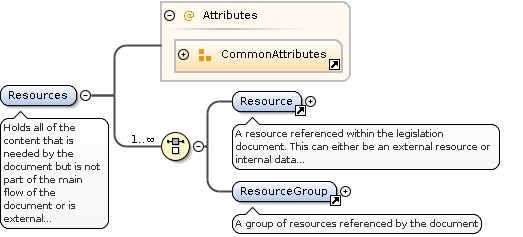 |
||||||||||||||||||||||||
|
Properties
|
|
||||||||||||||||||||||||
|
Used by
|
|
||||||||||||||||||||||||
| Model | |||||||||||||||||||||||||
| Children | Resource, ResourceGroup | ||||||||||||||||||||||||
|
Attributes
|
|
||||||||||||||||||||||||
|
Instance
|
|
||||||||||||||||||||||||
|
Source
|
|
